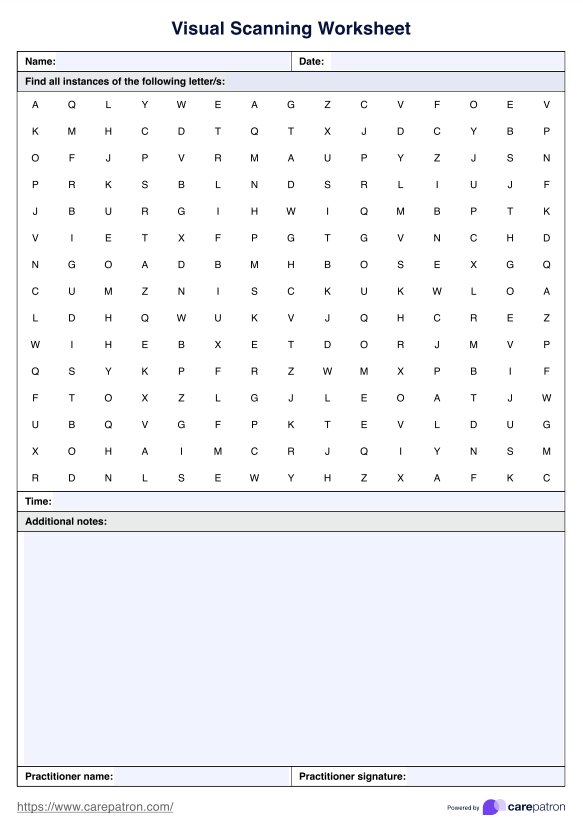Visual neglect is a problem with perception rather than actual visual acuity. As such, it should be treated by a neurologist, occupational therapist, or other qualified professional.

Visual Scanning Worksheet
Help your patients struggling with visual neglect attend to the affected side of their vision with our Visual Scanning Worksheet.
Visual Scanning Worksheet Template
Commonly asked questions
We have not provided an answer key as this worksheet can be used for any alphabet letter, meaning 26 answer keys! Instead, one way to quickly see each letter's location is to use CTRL + F on the digital version of the template to highlight the letter you want to find.
The worksheet is not designed as a test but as a therapeutic tool to help your patients actively attend to the affected side of their vision. As such, the time to find all letters they are scanning for should only be compared to your patient's previous time to monitor their progress during their therapy sessions.
EHR and practice management software
Get started for free
*No credit card required
Free
$0/usd
Unlimited clients
Telehealth
1GB of storage
Client portal text
Automated billing and online payments











